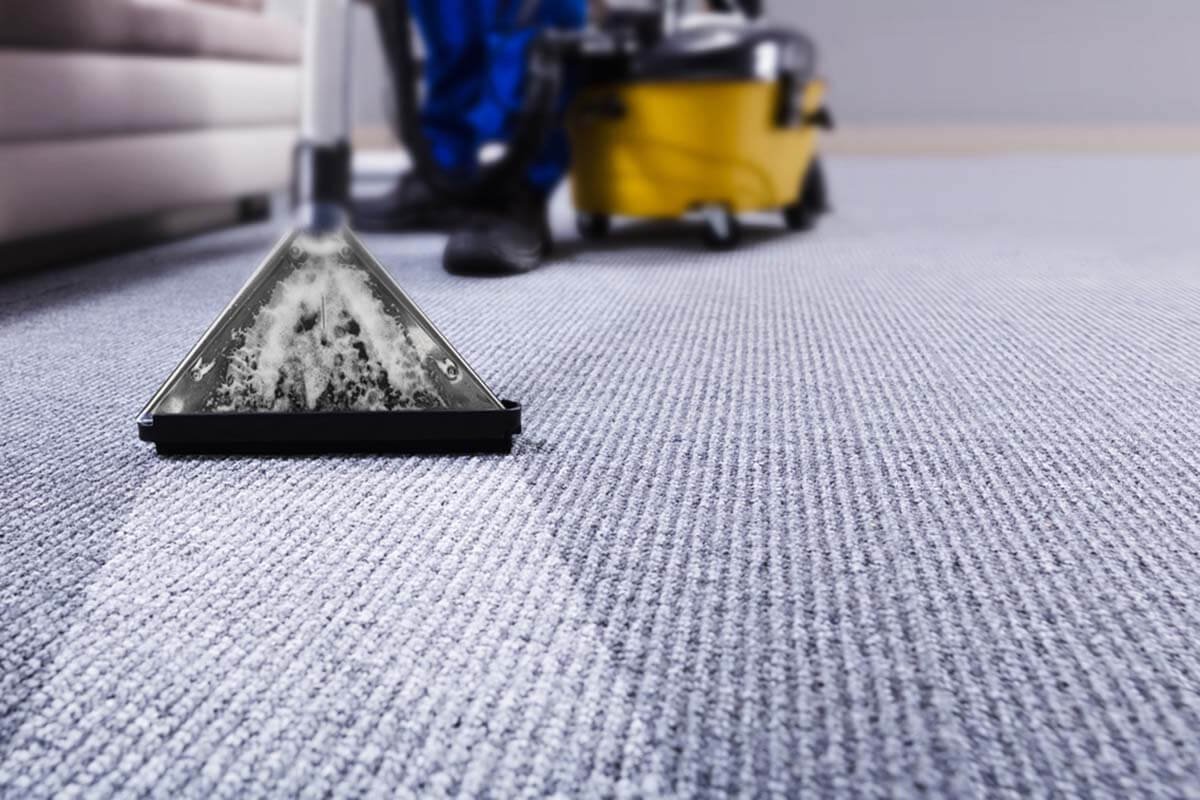Keeping your office carpets clean is essential for more than just looks—it’s about maintaining a healthy and professional environment. Carpets tend to trap dust, dirt, allergens, and pollutants over time. Without regular cleaning, these build up and create an unclean and unhealthy workspace.
The state of your carpets says a lot about your business. Dirty, worn-out carpets can give clients and employees a bad impression, making them question your attention to detail and professionalism.
On the other hand, clean and well-maintained carpets show that you care, creating a welcoming and professional atmosphere. In this article, we’ll discuss why proper carpet care is important and how it benefits the cleanliness, appearance, and health of your office.
In this article, we will explore the benefits of regular carpet maintenance for your commercial space. We will cover how routine cleaning extends carpet lifespan, improves indoor air quality, and enhances your business’s professional image.
Select a Professional Carpet Cleaning Service
Selecting the right local professional commercial cleaning services is crucial for ensuring thorough and effective cleaning while maintaining the integrity of your carpets and the health of your indoor environment. When choosing a carpet cleaning company, several key factors should be considered to make an informed decision.
First and foremost, consider the experience and expertise of the carpet cleaning company. Look for a company with a proven track record of providing high-quality carpet cleaning services and extensive experience in the industry. Experienced professionals are better equipped to assess your carpet’s needs and recommend the most appropriate cleaning methods to achieve optimal results.
Reputation is another essential factor to consider when selecting a carpet cleaning service. Research customer reviews and testimonials to gauge the company’s reputation and reliability. A reputable carpet cleaning company will have positive feedback from satisfied customers and a strong reputation for delivering excellent service.
Additionally, inquire about the cleaning products and methods used by the carpet cleaning company. Ideally, choose a company that uses eco-friendly cleaning products and methods that are safe for both the environment and indoor air quality. Eco-friendly cleaning products are free from harsh chemicals and toxins, making them safer for use around employees, clients, and pets.
Furthermore, the level of customer service provided by the carpet cleaning company should be considered. A professional and responsive customer service team can address any questions or concerns you may have and ensure a smooth and satisfactory cleaning experience.
Last but not least, consider the pricing and affordability of the carpet cleaning services offered by the company. While cost is important, it should not be the sole determining factor. Instead, focus on finding a carpet cleaning company that offers competitive pricing without compromising on quality or service.
The Benefits of Regular Carpet Maintenance

Regular carpet maintenance is paramount for preserving the longevity of your carpets, enhancing indoor air quality, and leaving a lasting positive impression on clients and employees alike.
Firstly, regular carpet cleaning extends the lifespan of your carpets. Carpets endure heavy foot traffic daily, leading to the accumulation of dirt, dust, and debris deep within the fibers. Over time, this buildup can cause the fibers to deteriorate, leading to premature wear and tear.
By implementing a routine carpet cleaning schedule, you can effectively remove these contaminants, preventing damage and prolonging the life of your carpets. Professional cleaning methods, such as hot water extraction or steam cleaning, penetrate deep into the fibers, removing embedded dirt and rejuvenating the carpet’s appearance.
Moreover, regular carpet maintenance improves indoor air quality. Carpets act as filters, trapping airborne particles like dust, pollen, pet dander, and allergens. Without proper cleaning, these contaminants can accumulate, contributing to poor indoor air quality and exacerbating respiratory issues like allergies and asthma.
Regular vacuuming and professional carpet cleaning remove these pollutants, promoting a healthier indoor environment for employees and visitors. Clean carpets also help prevent the spread of bacteria and germs, reducing the risk of illness among occupants.
Furthermore, regular carpet maintenance enhances the overall appearance of your commercial space, making a positive impression on clients and employees. Clean, well-maintained carpets convey professionalism and attention to detail, reflecting positively on your business’s image.
Common Carpet Cleaning Techniques
Professional carpet cleaning encompasses various techniques, each with its unique advantages and applications. Understanding these methods can help you determine the most suitable approach for maintaining your commercial carpets.
Hot water extraction, also known as steam cleaning, is one of the most common and effective carpet cleaning techniques. It involves injecting hot water and cleaning solution into the carpet fibers, agitating the fibers to loosen dirt and debris, and then extracting the dirty water using powerful vacuum suction. This method thoroughly cleans the carpet, removing deep-seated dirt, stains, and allergens, leaving behind a fresh and revitalized carpet.
Encapsulation is another popular carpet cleaning technique, particularly for low-moisture cleaning needs. It involves applying a specialized cleaning solution to the carpet, which encapsulates dirt and stains into crystalline particles. Once the solution dries, these particles can be easily vacuumed away, leaving the carpet clean and dry within a short period. Encapsulation is ideal for maintaining carpets in high-traffic areas, as it requires minimal drying time and allows for rapid reentry into the cleaned space.
Bonnet cleaning, also known as surface cleaning, is a quick and cost-effective carpet cleaning method suitable for interim maintenance. It involves applying a cleaning solution to the carpet, agitating the solution with a rotary machine fitted with a bonnet pad, and then buffing the carpet to absorb dirt and stains.
Dry carpet cleaning is another low-moisture cleaning method that utilizes specialized cleaning compounds or powders to clean the carpet without the need for water. The cleaning compound is spread evenly over the carpet, agitated to loosen dirt and debris, and then vacuumed away along with the absorbed soil. Dry carpet cleaning is ideal for carpets that cannot withstand moisture or require minimal downtime for drying.
Carpet Materials and Stain Removal

Understanding different carpet fibers and materials is crucial for effective stain removal and overall carpet care. Each type of carpet material has its unique characteristics and requires specific cleaning techniques to maintain its appearance and longevity.
One common carpet material is nylon, known for its durability and resistance to staining. Nylon carpets are relatively easy to clean and respond well to most cleaning methods. However, it’s essential to treat stains promptly to prevent them from setting into the fibers. For nylon carpets, hot water extraction is often recommended for deep cleaning, as it effectively removes dirt and stains without damaging the fibers.
Polyester carpets are another popular choice due to their softness and vibrant colors. While polyester carpets are inherently stain-resistant, they can still become soiled over time. Therefore, gentle cleaning methods are recommended to avoid damaging the fibers. Encapsulation or dry carpet cleaning is often preferred for polyester carpets, as they require minimal moisture and drying time.
Wool carpets are prized for their natural beauty and luxurious feel. However, wool is more susceptible to staining than synthetic fibers and requires special care when cleaning. Wool carpets should be cleaned with mild, pH-balanced cleaning solutions and avoided harsh chemicals that can damage the fibers. Spot cleaning with a mixture of water and mild detergent is often effective for removing stains from wool carpets, followed by blotting with a clean cloth to absorb excess moisture.
For commercial spaces with high-traffic areas prone to spills and stains, olefin carpets may be a preferred choice due to their stain-resistant properties. Olefin carpets are highly resistant to moisture and stains, making them easy to clean and maintain. For olefin carpets, regular vacuuming and spot cleaning with a mild detergent solution are usually sufficient to keep them looking their best.
Regardless of the carpet material, prompt action is essential when dealing with stains and spills. Blotting the stain with a clean cloth or paper towel to absorb excess liquid is the first step in stain removal. Avoid rubbing the stain, as this can push it deeper into the carpet fibers and cause damage. Instead, gently dab the stain until it begins to lift, then treat it with an appropriate cleaning solution according to the carpet manufacturer’s recommendations.
Develop a Carpet Cleaning Schedule
Establishing a regular carpet cleaning schedule is essential for maintaining a clean and healthy indoor environment. A well-planned cleaning schedule ensures consistent results and prevents the buildup of dirt, allergens, and bacteria in carpets.
Regular vacuuming is the foundation of any carpet cleaning schedule. Daily vacuuming helps remove surface dirt, dust, and debris, preventing them from settling deep into the carpet fibers. High-traffic areas should be vacuumed more frequently to prevent soil accumulation and maintain the carpet’s appearance.
In addition to daily vacuuming, periodic professional deep cleaning is necessary to remove embedded dirt, stains, and allergens that regular vacuuming may miss. The frequency of professional deep cleaning depends on factors such as carpet usage, foot traffic, and environmental conditions. Generally, commercial carpets should undergo deep cleaning every six to twelve months to ensure optimal cleanliness and hygiene.
Minimizing Disruptions During Cleaning
Minimizing disruptions during carpet cleaning is essential to maintain business productivity and workflow. One effective strategy is to schedule cleaning appointments outside of regular business hours. By arranging cleaning sessions during evenings, weekends, or holidays, you can ensure that the cleaning process does not interfere with daily operations or disrupt employee productivity.
Another approach is to stagger cleaning sessions across different areas of the workspace. Instead of cleaning the entire premises at once, divide the cleaning process into smaller, manageable tasks and tackle one area at a time. This allows employees to continue working in unaffected areas while cleaning takes place elsewhere, minimizing disruptions and maintaining business continuity.
Additionally, communicate openly with employees about the cleaning schedule and any temporary changes to workspace availability. Providing advance notice allows employees to plan accordingly and adjust their work schedules as needed. It also fosters transparency and cooperation, encouraging a collaborative approach to maintaining a clean and healthy work environment.
In addition, work closely with the carpet cleaning company to coordinate cleaning activities and ensure minimal disruption to business operations. Discuss specific requirements and expectations upfront, such as access to certain areas or the use of specialized equipment. By working together proactively, you can streamline the cleaning process and minimize its impact on daily business activities.
Conclusion
Professional carpet cleaning is vital for maintaining a clean, healthy, and visually appealing commercial environment or office. Investing in expert services not only protects your investment in carpets and other furnishings, like a massage chair, but also promotes the well-being of employees and customers. Clean carpets enhance indoor air quality, reduce allergens, and create a positive impression on clients and employees. By prioritizing professional carpet cleaning, businesses can create a welcoming and hygienic workspace that fosters productivity, professionalism, and success.






